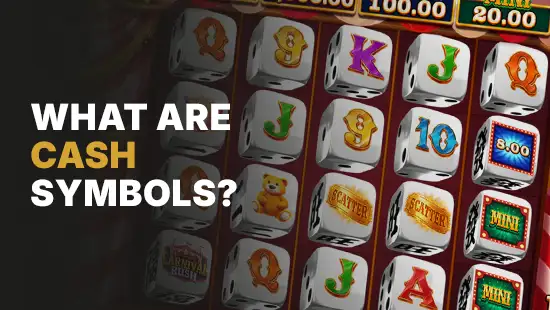

July 11, 2024, 14:00
French Deck: curiosities, origin and much more
It’s often thought that classic video games have their origins in modern times. However, this isn't the case with playing cards, as they could even be said to have existed during the times of the monarchy. As an example, the French deck of cards were used by excessive royalty at the same time it was used by commoners or lower society.

According to history, it's generally believed that the French deck of cards came into existence around the year 1480, characterized by the known “suits,” although there are doubts about this theory. The president of the International Playing-Card Society of London (IPCS) analyzed the different theories and research conducted by experts and historians regarding the origin of playing cards, concluding that there is a logical relationship regarding the geographical evolution of decks from east to west.
Until now, there is no clear or fixed hypothesis as we additionally need to allude to the principle of the scrolls of the Tang dynasty in China. This interpretation is mainly based on the discovery of some scrolls in which there had been mentions of a game called "paper fold game", which, according to their description, was similar to dominoes. For example Ddakji is a traditional South Korean game played with folded paper tiles.
However it is important to emphasize that there is currently no concrete evidence proving that "Paper folding" is actually the direct ancestor of dominoes.
On the other hand, it is also said that nomads brought fortune telling cards from India, which over time evolved into the playing cards we know today.
But regardless of the concept that advanced civilizations were responsible for the beginnings of this card game, it is also the case that these identical cards arrived in Europe from Egypt in 1370 and turned up in France seven years later. Here the game got a unique twist: the French match symbol was added. This could mean that the French adapted the cards or created their own variant based on the Egyptian design.
Therefore, this all refers to primitive variants of what modern playing cards are, but this does not mean that they are no longer taken into account as the main basis of modern playing cards.
In any case, whether from the East or from Europe, the origin of the French playing cards remains a subject of discussio. However, this has not been an obstacle for them to be used for other purposes such as entertainment and fun.
What are French playing cards?
French playing cards, originally called “Jeu de Cartes,” are cards that use the French colors and suits of clubs, diamonds, hearts and spades.
They can be recognized by the three figures that appear in the card game, namely the jack who is called Pillo or Valet in French, the queen called La Dame and the king who is called Le Roi.
Within the world of cards we find a fascinating diversity. Depending on the region, culture or game, there are countless variants with their own unique characteristics and rules.
These variations can vary widely in size. From compact packs with 32 cards to extensive sets with up to 100 cards, there is something for everyone.
However, it is important to emphasize that the standard deck, as we find in many popular games, consists of 52 cards. This classic deck forms the basis for countless variants and serves as a reference point for many players.
What is the order of the French cards?
The order of modern French cards is inspired by the designs of the English deck, which, in turn, were based on models used in northern France, specifically in Rouen.
The French card deck has a fixed order:
Aces: Each of the four suits (hearts, spades, diamonds and clubs) has an ace.
King (Roi): The highest card in each suit is the king.
Queen (Dame): The second highest card in each suit is the queen.
Jack (Valet): The third highest card in each suit is the Jack.
Number Cards: The rest of the cards in each suit are numbered from 2 to 10.
So the order of the cards within each suit is:
Ace > King > Queen > Jack > 10 > 9 > 8 > 7 > 6 > 5 > 4 > 3 > 2
What is the difference between the French and the English deck?
Now that we've just explained the French card game, it's a perfect time to discuss the main differences from the English card game. This way we can immediately notice the nuances and deepen our knowledge of both variants.
Although the English card game is heavily inspired by the figures of the French card game, its design is completely different. English playing cards have a less complicated, minimalist design, which attracts a little more attention and is therefore less complicated to study or interpret. This does not mean that the most important feature in their aesthetic (elegance) is not present, as you can still respect the information that distinguishes them from an everyday pack of cards.
Another difference is that they are numbered to ten, perceived through the K representing the king, the Q representing the queen and the J representing the jack. The Ace is the best card, but it varies in value depending on the type of game being played.
Interesting information
The design was created exclusively for the upper class: that’s why its illustration alludes to elegance.
Originally they did not follow a colour pattern: the symbols on the cards were black and red, however it was in 1480 (their creation) when the French have used a colour patterns for the first time.
Thanks to the French, the playing card symbols are the identical throughout Europe: that is because they simplified the design resulting in more ease in memorising the symbols and reading the cards.
The variety of cards with Kings on them represent European Kings: as an example, the King of Hearts represents Charlemagne; the King of Diamonds is for Augustus; the King of clubs is in honour of Alexander of Macedon; and the King of Spades is for King David. The King of Hearts is "The Suicide King": he is depicted without a moustache on the cards and with an sword on his head, symbolising the king himself.
French playing cards had been used by soldiers inside the 2nd world war: these had been despatched mainly to American soldiers who had been stationed in German camps in the course of the second world war, however they hid a secret, and that is that each card contained components of maps that together shaped " the road to freedom".


